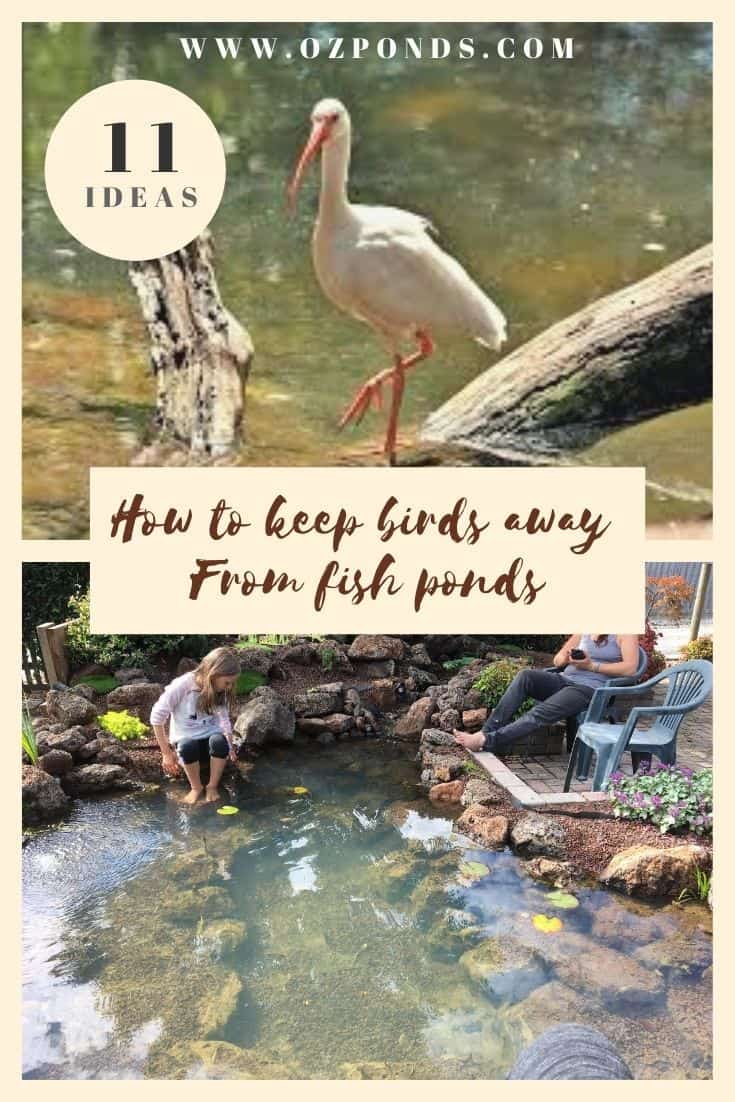Birds eating your fish is a problem that can pop up suddenly. Sometimes a pond will go years without having a bird problem.
But once they find the pond and an easy meal they can be difficult to get rid of.
The easiest and most successful method is some sort of physical barrier. But this can sometimes be unsightly and hinder maintenance. The advantage is that physical barriers are easy to retro fit into an existing pond.
A very effective method that requires no maintenance or costly setup is providing good hiding areas for the fish.
Predatory birds such as heron and ibis need to be able to stand to hunt effectively.
Obviously hiding spots can be installed into an existing pond but depth will need to be a consideration before building a pond as it’s not easily retrofitted.
Repellents is the third method I’ll talk about in this article. This can be light, movement or sound. I’ll provide you with some options to choose from.
Physical barriers
Ok let’s talk physical barriers.
Pond net
By far the most common method of physical barrier is the trusty pond net. The reason it’s so common is it works, it’s pretty cheap and it can be installed when needed.
The downside to the trusty pond net is it’s ugly! Nets over ponds just ruin the athstetics. Pond nets, if needed for extended periods of time get tangled in the plants. Not to mention they make pond maintenance harder.
Having said that sometimes it’s just simply a matter of saving the fish.
For me a pond net is an effective short term solution. I prefer some of the more astetically pleasing options for more long term deployment.
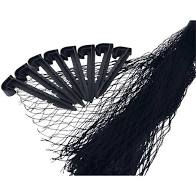
Fishing line
Fishing line works in two ways.
Number one it hinders the heron or ibis’s approach as it tries to land in the pond.
Number two it is set at a level where it makes it impossible for the ibis or heron to walk around inside the pond.
The fishing line is setup in a grid like pattern about 30cm off the waters surface. Ensure it’s nice and taught!
Fishing line is more pleasing on the eye as it’s almost invisible. Almost being the key word. You’ll still see it and overtime it will annoy you.
For me it’s a more appealing option than the trusty pond net and could be deployed for a longer period of time. I will only use this long term if all other measures fail.
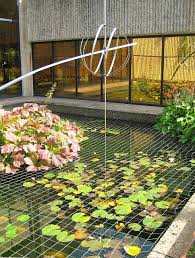
Hiding spots and depth
Providing hiding spots and deep pond areas where ibis and herons cannot stand is incredibly effective at keeping your beloved pond fish safe and sound.
Fish tunnel or cave
A fish tunnel or cave is a really easy way to provide a safe hiding area for your fish. It’s cheap and easy. And can be added to an established pond.
All you’ll need is a piece of pipe. I like to use 225mm pipe or a large plant pot placed on its side. Then I cover the pot or pipe with rocks. This makes it look totally natural when looking into the pond from above.
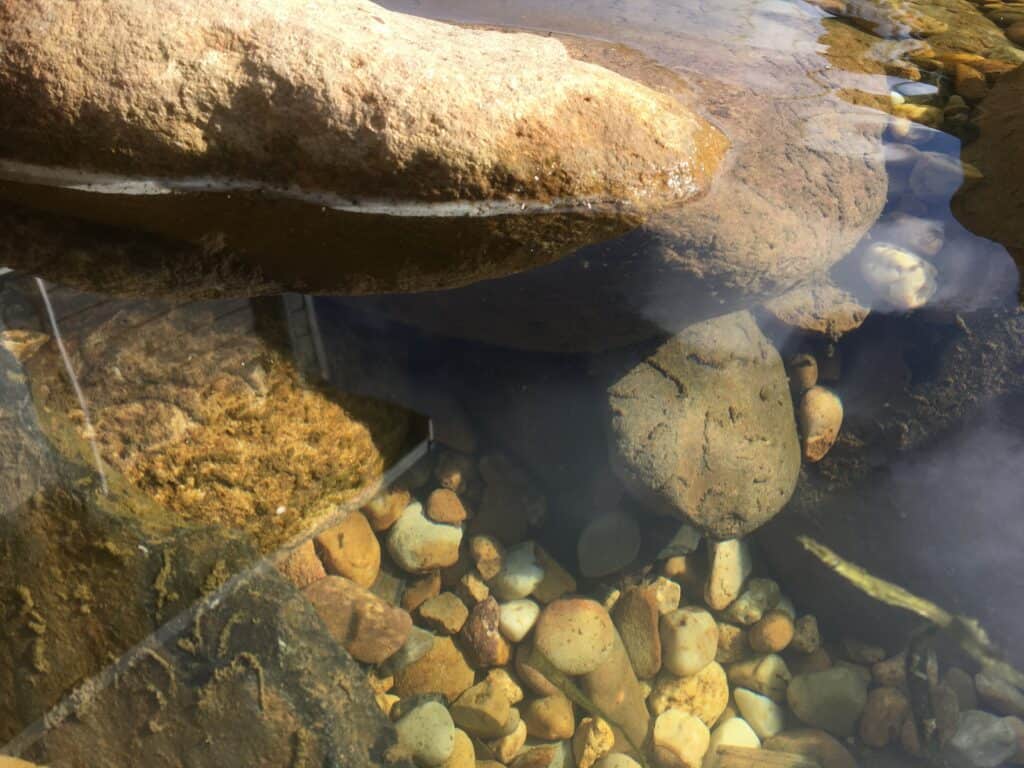
Plants
Plants provide great shelter for pond fish to hide. Water Lilies will float on the surface and provide great cover.
Milfoil grows above and below the surface and provides excellent shelter for both large and small fish.
Even larger grasses can be effective as they move in the breeze creating movement. The movement can make the predatory birds wary.
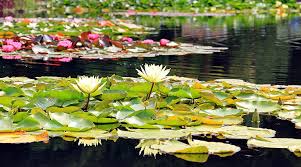
Depth
Pond depth is really really effective in keeping fish safe from those predatory birds. Ibis and herons like to stand in shallow water when they are hunting your fish.
Providing areas of the pond where these birds cannot stand and hunt will really help your larger valuable fish survive as they will gravitate to these deeper pools.
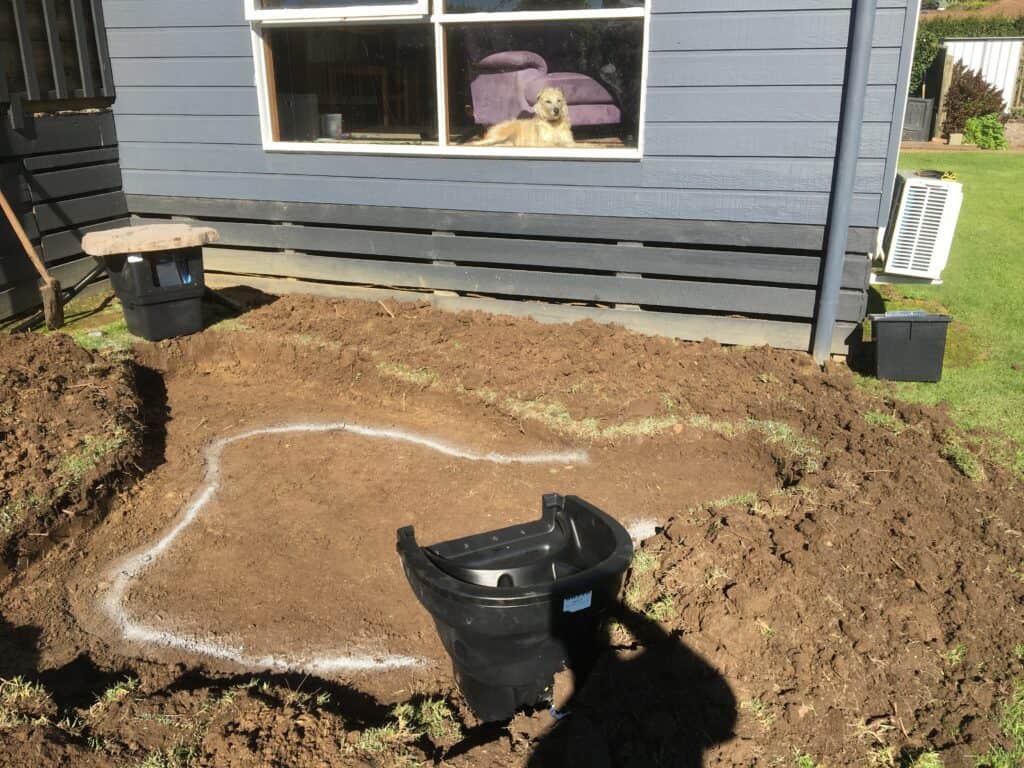
Repellents
Repellents work best when used in conjunction with a good design optimising some of the above concepts that provide shelter.
Water movement
Water movement in a pond is a must in so many levels. It should always be present as it will keep the water healthy.
But in terms of keeping predators away it’s also really valuable.
Good water flow will create bubbles and shimming on the waters surface, thus reducing visibility into the pond.
The constant movement also makes the predatory bird wary and much less likely to stick around for a meal.
Adding air stones is a great way to retrofit in added water movement in an existing pond. There’s quite a few reasonably priced air pumps available that can power multiple air stones.
Another great way to add movement is a waterfall.

Lights
The lights reflection coupled with the water movement creates quite a lot of activity. This activity can become a sensory overload for any ibis and herons looking for an easy meal.
These days pond lights are really cheap and easy to install even for us diy’ers.
You can buy ones that have a remote and will change colours.
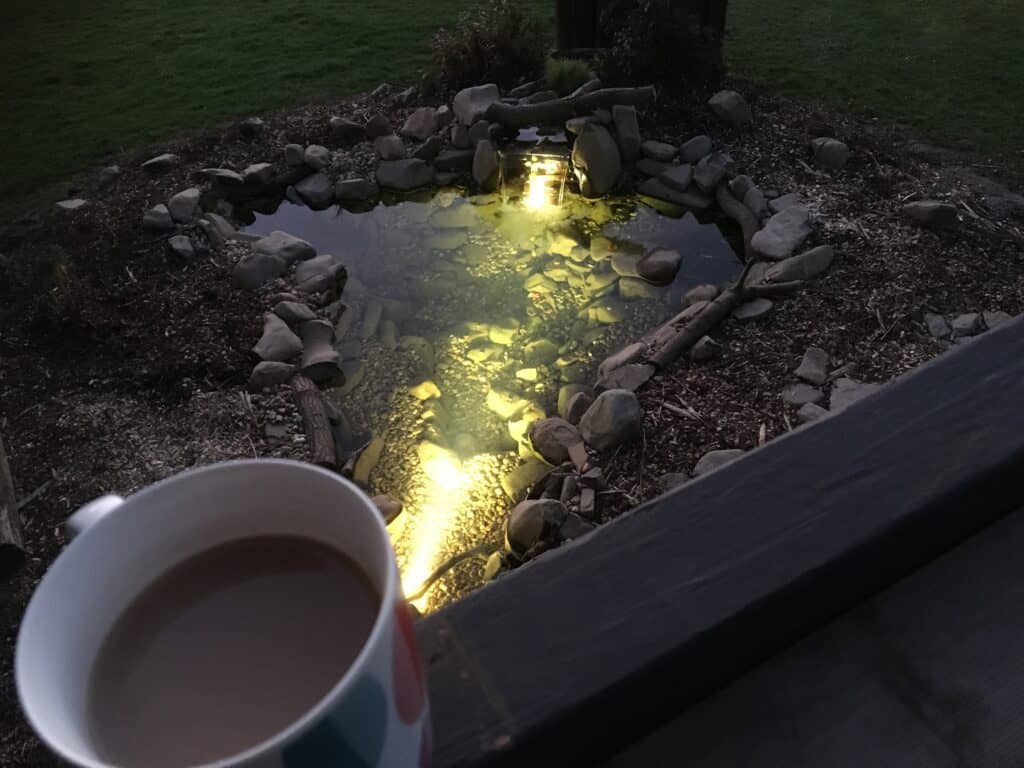
Statues & ornaments
Using statues has been a common type of bird deterrent probably since the dawn of civilisation. Something that’s worked for thousands of years is certainly worth a try.
It doesn’t need to be the old faithful scarecrow. Many people are using dummy snakes, birds of prey and even herons.
My understanding is if the heron thinks another bird is already there, they bugger off. I’m not to sure about this.
People who use statues or dummy animals tell me it’s important to continually move them about around the pond. This makes sense as the birds believe they are the real thing.
Another type of statue/ ornament to consider is a pond spitter. These come in many shapes and sizes here’s one thats a heron spitter.
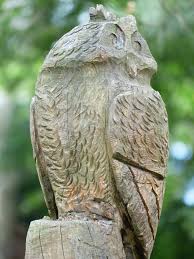
Pets/ people
Being constantly present around your pond is easily one of the best deterrents. Predatory birds are very wary of us and will stay away when we are around.
Obviously it’s impossible to keep a constant vigil but allowing your pets particularly dogs to roam around the pond will work wonders.
We use to have an ibis that would pay our top pond a visit. A few times being chased off by our dog and haven’t seen him since!
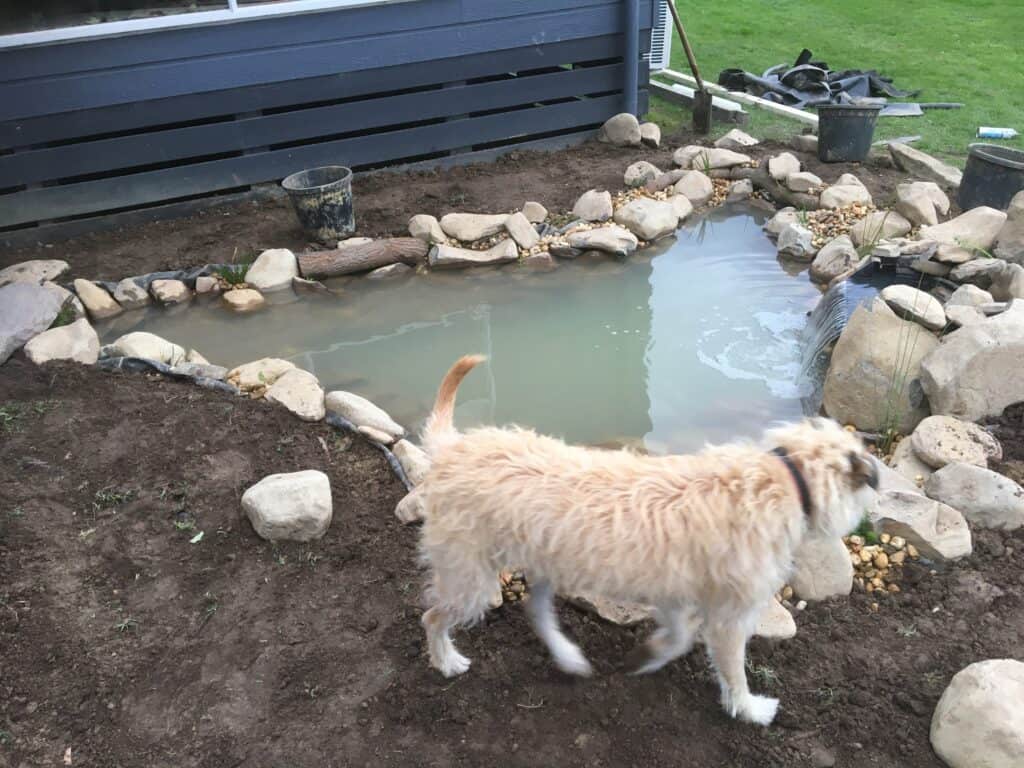
Specialised bird scarer
There’s is a number of available gadgets that are used by farmers and horticulturist to scare away birds on their trees and farms.
Of course there is no reason why can’t use these methods around our ponds.
Some are quite low tech simply using movement generated by the wind to ward off any predators. Others are slightly more sophisticated employing motion sensors, infrared lights and high frequency sounds.
For me I like the good old fashioned bamboo Japanese deer scarer. It just looks and sounds more fitting in a pond environment.
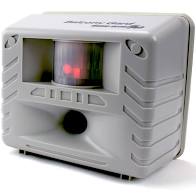
Sprinklers
My last suggestion is a motion sensor sprinkler. These are really pretty cool.
Once the detect any motion near or on the pond they start shooting water. The water won’t hurt the birds but it certainly sends them flying!
Just remember you’ll want to deactivate the sensor when you visit the pond! Otherwise you’ll be soaking wet and slightly embarrassed.
After you’ve enjoyed the pond be sure to reactivate the sensor!
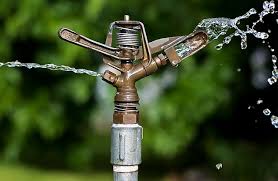
Subscribe
From time to time pond suppliers will offer special discounts to me. These discounts sometimes include items mentioned above.
These savings I want to share with my readers and help them save money in their ponds.
If you would like to receive these special offers and discounts, make sure you sign up to the mailing list using the button below.

